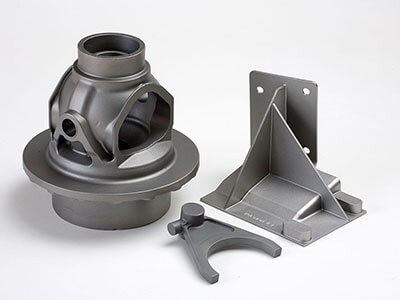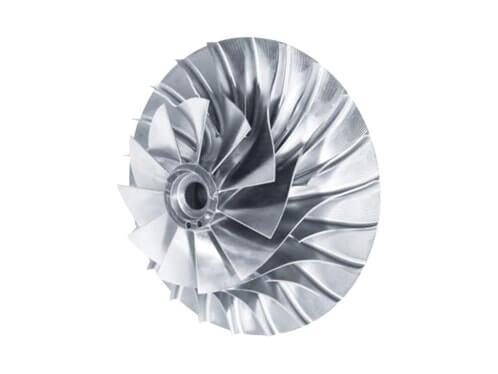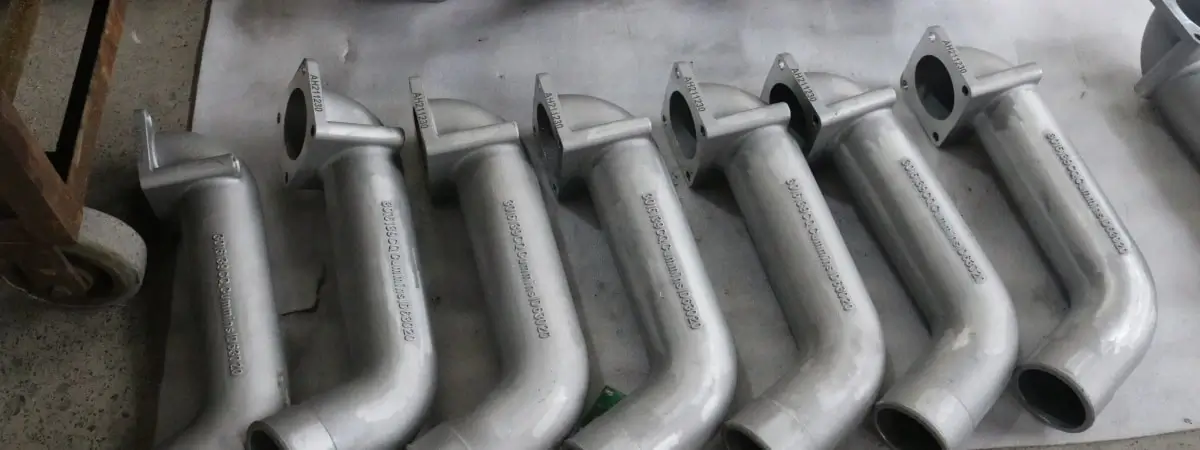Metal casting is the process of making objects by pouring molten metal into a mold that has a shaped space. The metal then cools and hardens to a solidified part. When it comes to mass production, casting is often a cheaper way to manufacture parts than machining them from a solid piece of metal. Casting allows for a high level of detail, which results in not needing additional fabrication or assembly.
Although many materials can be cast, iron and steel are usually the most popular. Iron and steel are characterized by excellent mechanical properties and a wide range of applications. While the two may look similar, they have distinct differences. Let’s take a look at the differences between steel castings and iron castings.
Chemical Composition Differences between Cast Iron and Cast Steel
Cast iron usually refers to gray iron, ductile iron and malleable iron. It is an iron casting with a carbon content higher than 2%.
Cast steel usually refers to plain carbon steel and alloy steel. This is a steel casting with a carbon content of less than 2%.
Therefore, the chemical composition and raw materials of cast iron and cast steel are not very different.
While cast iron and steel may look similar on the surface, they both have distinct advantages and disadvantages, from production to application. Understanding these advantages and disadvantages and making the appropriate choice can mean a tremendous difference between strength and durability.
Characteristic Comparison Table of Cast Iron vs Cast Steel
The following table provides a general overview of the qualities of each material.
| Materials | Grey Iron | Ductile Iron | Steel |
|---|---|---|---|
| Advantage | Good vibration damping, good wear resistance, good machinability and low notch sensitivity. | High strength, ductility and heat-resistance and toughness. So a wider application, in some cases, can replace the carbon steel. | Great design flexibility, good weld-ability and workability. It allows for complex shapes and hollow cross-section parts. |
| Disadvantage | Its tensile strength and elongation are very low. So, it can only produce some metal parts with low physical requirements. | More casting defects, its production technology is high. The production process is more complex. Hence higher cost than normal grey cast iron and cast steel. | It has comparatively bad shake-suction, wear resistance and mobility. The costs are higher than normal cast iron. |
| Applications | Engine blocks, cylinder heads, manifolds, gas burners, gear blanks, enclosures, housings, outdoor hardscape products, frying pans, electrical boxes, decorative castings, stove parts, weights. | Steering knuckles, crankshafts, heavy duty gears, automotive and truck suspension components, hydraulic components, automobile door hinges. | Industrial wheels, casting gears, valve bodies, mining machinery, hydroelectric turbine wheels, forging presses, railroad car frames, pump casings, marine equipment, engine casings, heavy trucks, construction equipment. |
Castability
Iron melts at about 2300˚F(1260℃) and steel melts at 2600˚F(1427℃), and both are poured into molds at even hotter temperatures.
Cast iron is relatively easy to cast because it is easy to pour and does not shrink as much as steel. This means it will readily fill the complex voids in a mold and requires less molten material to do so. This fluidity makes cast iron an ideal metal for the construction of architectural structures such as fencing and benches.
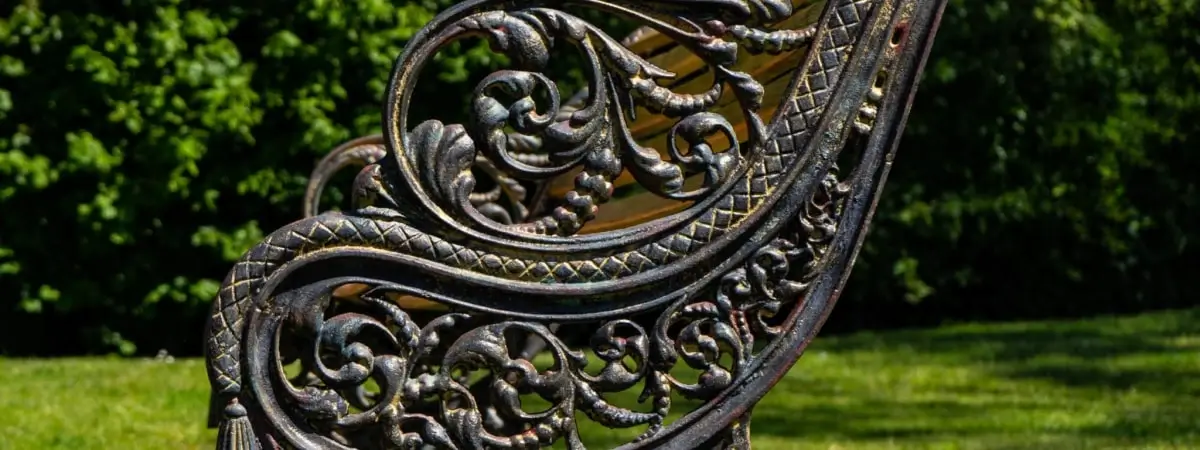
Cast steel is more difficult to cast than iron. It has a higher melting point and greater shrinkage, which needs to be considered in the mold design. Risers should be given more capacity to draw from as the metal cools and shrinks. Care should be taken with the thickness of the mold cavity as thinner areas will cool faster than thicker areas, which can create internal stress points that can lead to fracture.
Cast steel is also less fluid than iron, making it more difficult to pour and fill complex gaps in the mold cavity. Melted steel is also more likely to react with the internal surfaces of the mold, making the results more unpredictable.
Machinability
In most cases, cast parts require machining to achieve accurate tolerances and desired surface finishes.
Machinability is a measure of how easily a given material can be cut or ground, some materials are more difficult to machine than others. As a rule of thumb, metals with significant alloying added to improve mechanical properties have lower machinability.
Ductile cast iron is usually easier to machine than cast steel. The graphite structure in cast iron fractures more easily and in a more uniform manner. Harder iron, such as white iron, is more difficult to machine because of its brittleness.
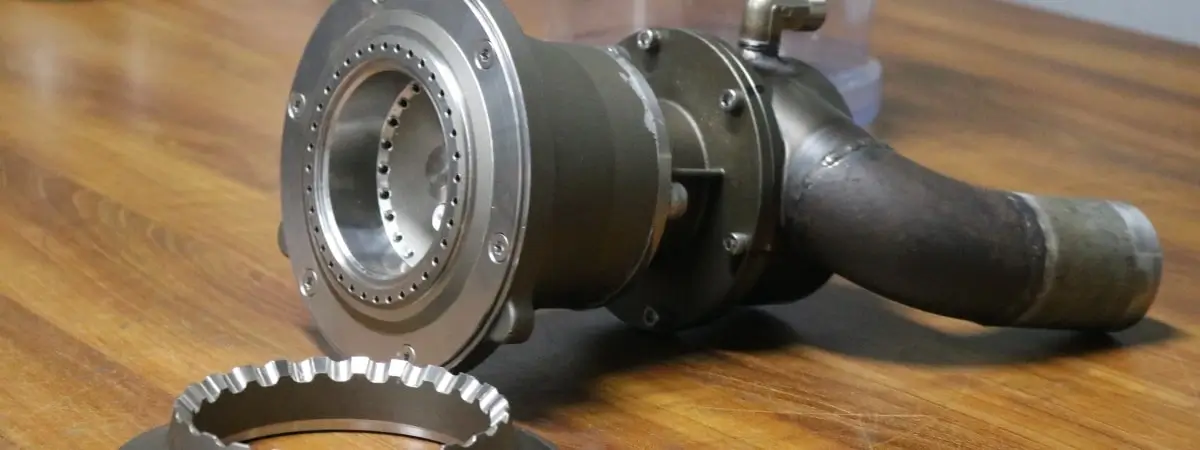
While carbon steel is the easiest type of steel to machine, high-carbon steel can be more time-consuming to cut or grind and will wear tools faster, resulting in higher production costs. Low-carbon steel can get gummy, making it difficult to work with.
Generally, the presence of alloys used to increase mechanical performance often makes machining more difficult.
Damping Ability
Casting is often a valuable means of creating intricate parts used in machine applications where vibration is often a factor.
The graphite structure in cast iron, especially the flake structure in gray cast iron, is particularly good at absorbing vibrations. This makes cast iron an ideal material for engine blocks, cylinder housings and machine beds, as well as other applications where robustness and precision are important.
Cast steel typically has a lower damping ability than cast iron, which can lead to excess vibration and noise in the form of ringing or squealing.
Impact and Wear Resistance
Cast iron typically has better resistance to mechanical wear than cast steel, but when it comes to impact resistance, cast steel can withstand significant stress and strain without fracturing bending, or deforming. This is due to its excellent toughness.
Cast steel wears more readily than cast iron but may still be resistant to certain types of abrasion. Certain alloy additions can increase both impact and wear resistance.
Strength without ductility results in a brittle material, that is highly susceptible to fracture. Because of its brittleness, cast iron has a limited range of applications.
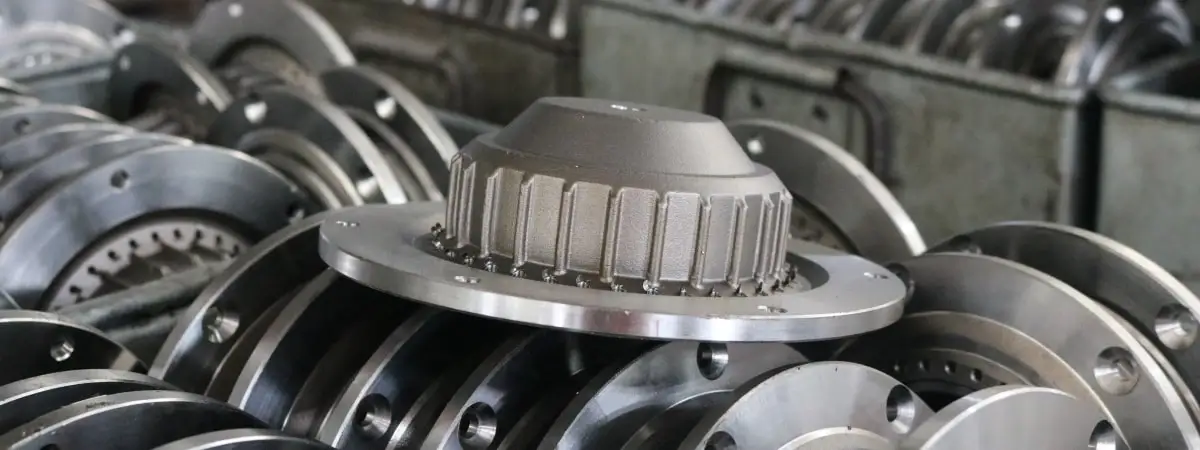
Corrosion Resistance
When it comes to corrosion, cast iron has better corrosion resistance than cast steel. That doesn’t mean either is impervious to corrosion though. When left unprotected, both metals will oxidize in the presence of moisture (while iron develops a patina to prevent deep corrosion of the metal’s integrity). Eventually, they will completely decompose.
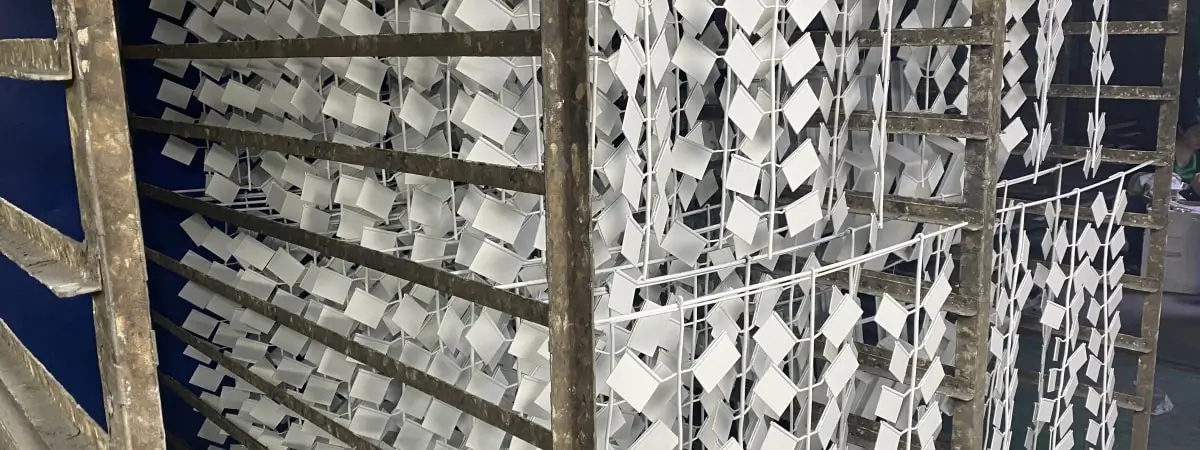
To prevent this, the coating is recommended for both steel and iron castings. The most used coating methods include paint or powder coating
Cost Comparison
Cast iron is often cheaper than cast steel because of the lower material costs. And as we’ve mentioned in the castability, cast iron is relatively easy to cast because it is easy to pour and does not shrink as much as steel. Less energy and labor are required to produce a final product.
While raw steel is more expensive, and it requires more time and attention to cast. But Steel is also available in many prefabricated forms—such as sheets, rods, bars, tubes, and beams—and can often be machined or assembled to suit a particular application. Depending on the product, and quantity required, fabricating existing steel products may be a cost-effective option.
SIPX CASTING: Reliable Casting Service for You
If you need more information about these metal materials, let SIPX help. Having expert advice during material selection gives you the edge over your competition. At SIPX, we boast of the best technicians and professional machinists who will choose the best material for your project.
